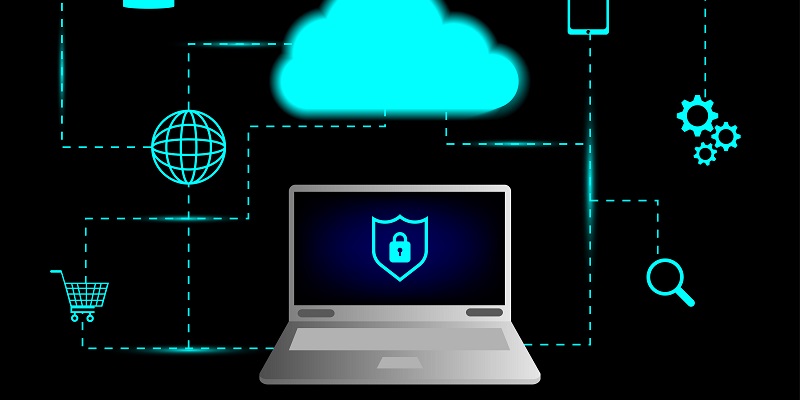In today’s digital landscape, where sensitive data and mission-critical applications are stored and processed in Kubernetes clusters, proper security measures are paramount. As businesses increasingly leverage multi-cloud architectures to harness the benefits of multiple cloud service providers, it is crucial to address the unique security challenges that arise in such complex environments. This article delves into the best practices and key considerations for effectively securing Kubernetes in a multi-cloud setting.
Challenges in implementing a one-size-fits-all security approach
Given the intricate and diverse nature of multi-cloud environments, a one-size-fits-all approach to security is no longer feasible. Each cloud service provider has its own set of security protocols, access control mechanisms, and network architectures. Attempting to converge these disparate security measures into a single, cohesive framework can lead to gaps in protection and potential vulnerabilities. Thus, organizations must adopt a more nuanced and tailored security strategy that aligns with the specific requirements of each cloud provider.
The risk of potential lock-in scenarios due to a lack of unified security policies
One of the significant concerns in multi-cloud environments revolves around potential lock-in scenarios. In the absence of unified security policies across different cloud platforms, organizations face the risk of being tied to a specific provider due to the complexity and challenges associated with migrating their applications and data. This underscores the importance of establishing a unified security framework that allows for seamless migration across cloud environments while ensuring data privacy, integrity, and compliance.
The need to protect sensitive data stored and processed in Kubernetes clusters
Sensitive data lies at the heart of many Kubernetes applications. Whether it is personally identifiable information (PII), financial records, or intellectual property, organizations must prioritize safeguarding this data. Implementing strong encryption mechanisms, secure access controls, and robust identity and access management (IAM) protocols within Kubernetes clusters is essential to prevent unauthorized access or data breaches. Employing encryption at rest and in transit, segregating data, and regularly patching vulnerabilities are crucial steps in achieving robust data security.
The complexity of IAM in different cloud environments and access control systems
IAM can become a complex challenge in the context of Kubernetes deployments across multiple cloud providers. Each cloud platform has its own IAM systems, user management mechanisms, and access control frameworks. Coordinating and managing access permissions across these diverse systems can lead to issues such as access inconsistencies, security gaps, and administrative complexities. To address this, organizations should consider employing federated identity and access management systems or adopting centralized IAM solutions that are compatible with multiple cloud providers.
The importance of network policies and segmentation in Kubernetes security
Network policies and segmentation play a crucial role in protecting Kubernetes clusters from internal and external threats. Implementing granular network policies helps control communication and isolate workloads, preventing unauthorized access or lateral movement within the cluster. By enforcing strict ingress and egress rules, organizations can enhance their security posture, mitigate potential data exfiltration risks, and maintain the integrity and confidentiality of their Kubernetes deployments.
The necessity of regular audits is to identify and address misconfigurations or vulnerabilities
Regular auditing of Kubernetes clusters is essential for identifying and rectifying misconfigurations, security loopholes, or potential vulnerabilities. In a multi-cloud environment, the auditing process should encompass all aspects of the cluster, including cloud-specific configurations, network policies, access controls, and cluster components. By conducting periodic audits, organizations can proactively identify security weaknesses, apply patches, and enforce compliance with industry standards, minimizing the risk of data breaches or unauthorized system access.
Preventing resource exhaustion attacks through the enforcement of resource quotas and limit ranges
Resource exhaustion attacks, such as denial-of-service (DoS) attacks, can severely impact the availability and performance of Kubernetes clusters. By setting resource quotas and limit ranges, organizations can ensure that individual workloads do not consume excessive resources, protecting the overall stability and performance of the cluster. Enforcing these resource management practices enables organizations to prevent resource depletion and resource contention scenarios, mitigating the risk of service disruptions and maintaining the integrity of their multi-cloud Kubernetes environment.
Utilizing namespaces to effectively isolate workloads in Kubernetes
Namespaces in Kubernetes provide a powerful mechanism for isolating workloads and creating logical boundaries within a cluster. By segregating applications and services into different namespaces, organizations can prevent cross-access, limit attack surfaces, and apply distinct security policies to each namespace. This isolation ensures that compromised components or unauthorized access within one namespace do not jeopardize the security or operation of other workloads, enhancing overall cluster security and resilience.
The role of visualization tools, such as ARMO Platform’s RBAC visualization, in managing complexity
Navigating the complexities of RBAC (Role-Based Access Control) in multi-cloud Kubernetes environments can be daunting. Visualization tools, like the one offered by ARMO Platform, can simplify and streamline RBAC management. These tools provide a comprehensive overview of roles, permissions, and access controls across different cloud providers, allowing organizations to easily identify and manage security policies. By visualizing RBAC configurations, organizations can mitigate the risk of misconfigurations, enforce the principle of least privilege, and enhance overall security posture.
Securing Kubernetes in a multi-cloud environment is a critical undertaking for organizations handling sensitive data and running mission-critical applications. By adopting a tailored and nuanced security approach, addressing the challenges posed by IAM, enforcing network policies, conducting regular audits, preventing resource exhaustion attacks, leveraging namespaces, and utilizing visualization tools, businesses can fortify the security of their multi-cloud Kubernetes deployments. Through diligent implementation of best practices and adherence to industry standards, organizations can mitigate risks, ensure data confidentiality, integrity, and availability, and confidently harness the transformative potential of Kubernetes in a multi-cloud landscape.

